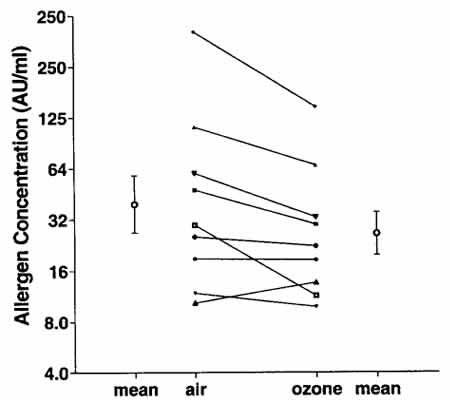
Figure 13: Ozone exposure increases the responsiveness of people with allergic asthma to inhaled house dust mite antigen.The graph shows the airway responsiveness of people with mild allergic asthma to inhaled house dust mite allergen after 7.6-hour exposures to both ozone (0.16 ppm) and filtered air. The point on the far left side of the graph indicates the average concentration of inhaled house dust mite antigen required to produce a 20% decrease in FEV1 following air exposure. The point on the far right indicates the average concentration required to produce a 20% FEV1 decrease following the ozone exposure. On average, after an ozone exposure less antigen is required to produce the FEV1 decrease compared to an air exposure. The points in the center of the graph are the data for the individual participants after both air and ozone exposure. Seven out of nine participants required a lower dose of antigen to produce a 20% FEV1 decrement following the ozone exposure compared to the air exposure. Source: Kehrl et al., 1999